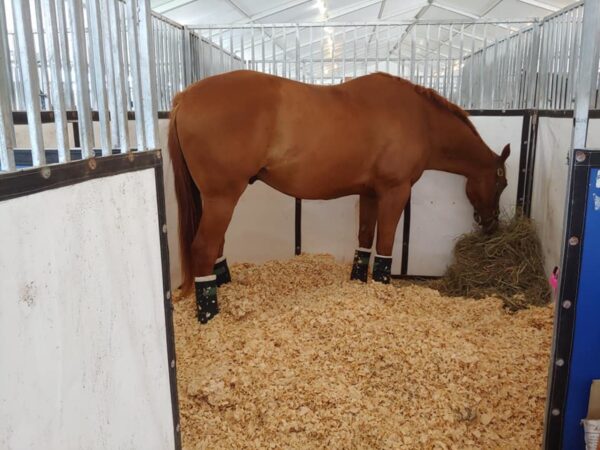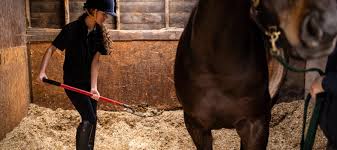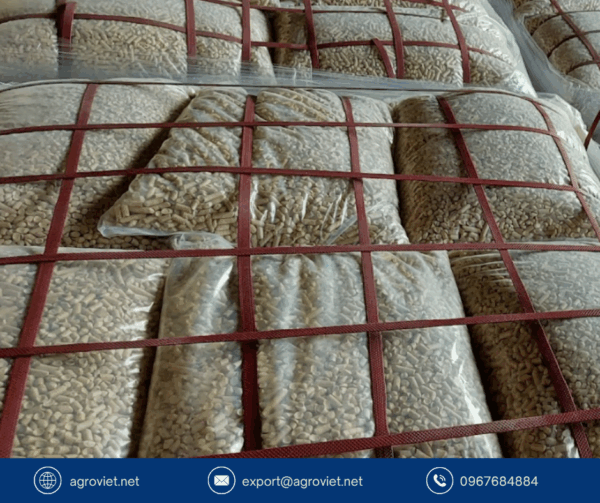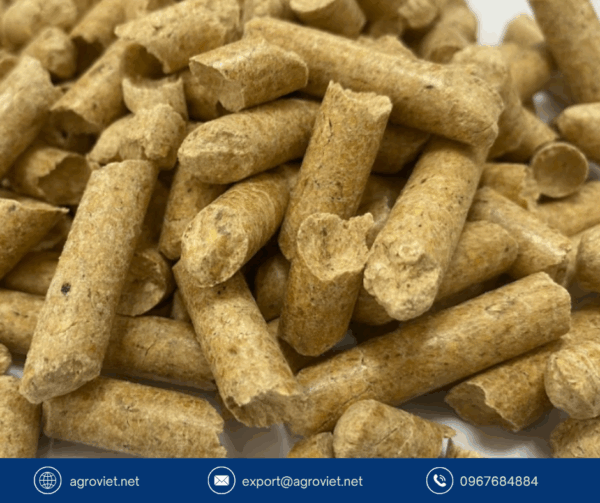Clostridial Infections and Bedding Hygiene: Preventing Blackleg in Beef Herds
Introduction to Clostridial Infections and Blackleg
Clostridial infections, particularly blackleg (clostridial myositis), are a significant threat to beef herds, causing sudden death and substantial economic losses. Caused by Clostridium chauvoei, blackleg is a non-contagious bacterial disease triggered by ingesting spores from contaminated environments, including soil and bedding. Poor bedding hygiene, especially wet or soiled litter, increases exposure to these resilient spores, exacerbating infection risk. Clean wood pellets, with their high absorbency and hygienic properties, are a vital tool for maintaining a clean environment and reducing blackleg risk. Drawing on insights from the Texas A&M Veterinary Medical Diagnostic Laboratory (TVMDL), this post explores how bedding hygiene impacts blackleg and why wood pellets are essential for prevention.
Watch this: https://www.youtube.com/watch?v=Ve1zvYrmqis&pp=0gcJCdgAo7VqN5tD
Understanding Blackleg in Beef Cattle To Clostridial Infections
Blackleg is an acute, febrile, and often fatal disease characterized by necrotizing myositis, where Clostridium chauvoei spores germinate in skeletal or cardiac muscle under low-oxygen conditions, producing toxins that cause tissue necrosis and hemorrhage. Affected cattle, typically well-nourished animals aged 6-24 months, show sudden lameness, depression, or death without premonitory signs. The TVMDL case study notes that blackleg lesions include dark red muscle with gas bubbles, often with a rancid butter odor, and concurrent fibrinous pericarditis or myocarditis. Outbreaks in 2017, linked to environmental changes from Hurricane Harvey, resulted in mortality rates of 10-20% in affected herds, with treatment costs averaging $50-$150 per case.
How Clostridial Spores Spread
Clostridium chauvoei spores are ubiquitous in soil and organic matter, persisting for years. Cattle ingest spores while grazing or through contaminated feed or bedding, with spores passing through the intestinal wall into the bloodstream and lodging in muscles, where they remain dormant until triggered by trauma or hypoxia. The TVMDL study highlights that environmental disturbances, such as flooding or soil excavation, expose deeply buried spores, increasing infection risk. Wet, soiled bedding in housing systems can harbor these spores, especially when contaminated silage or haylage is used, amplifying exposure in confined herds.
The Role of Poor Bedding Hygiene
Poor bedding hygiene, particularly wet or manure-laden materials like straw or low-quality sawdust, creates an ideal environment for clostridial spores. Wet bedding retains moisture, fostering anaerobic conditions that support Clostridium survival, while soiled litter increases spore concentration from fecal contamination. The TVMDL and related studies note that reused or infrequently replaced bedding in indoor housing systems, common in some U.S. operations, can elevate blackleg risk by 20%, as spores accumulate in damp, organic-rich environments. Poor ventilation and high humidity further exacerbate these conditions, increasing spore exposure through inhalation or ingestion.
Health and Economic Impacts To Clostridial Infections
Blackleg has severe consequences for beef herd health and farm economics:
-
Health: Sudden death is common, with a case fatality rate approaching 100%. Survivors may develop chronic lameness or myocardial damage, reducing productivity. Outbreaks can affect multiple animals daily, as seen in the 2017 TVMDL cases post-Hurricane Harvey.
-
Economic: Losses include mortality, treatment costs, and reduced weight gain, with affected herds facing $100-$500 per animal in direct costs. Carcass condemnation due to necrotizing lesions adds to losses, with large operations potentially losing $10,000-$50,000 per outbreak. Welfare concerns also increase scrutiny, impacting market reputation. The TVMDL study emphasizes that blackleg’s rapid progression makes treatment with antibiotics like penicillin largely ineffective, highlighting prevention as critical.
Why Poor Bedding Increases Blackleg Risk To Prevent Clostridial Infections
Poor bedding choices exacerbate blackleg by:
-
Moisture Retention: Wet straw or sawdust creates anaerobic conditions, ideal for Clostridium chauvoei spore survival.
-
Pathogen Reservoirs: Soiled bedding accumulates manure, increasing spore loads from fecal shedding.
-
Environmental Exposure: Contaminated bedding, especially when sourced from soil-disturbed areas, introduces spores into the housing environment.
-
Lack of Hygiene: Infrequent cleaning or reuse of bedding, as noted in some confinement systems, allows spores to persist, with studies showing a 25% higher infection risk in unhygienic conditions. The TVMDL case study links increased blackleg cases to environmental changes, such as flooding, which can contaminate bedding materials, underscoring the need for hygienic litter management.
The Importance of Wood Pellets To Prevent Clostridial Infections
Clean wood pellets, made from compressed, heat-treated sawdust, are an effective bedding solution for preventing blackleg. They absorb up to five times their weight in moisture, keeping litter dry and reducing anaerobic conditions that support clostridial spores. The heat-treatment process eliminates pathogens, ensuring a hygienic environment. Unlike straw, which retains moisture, or sand, which can harbor bacteria, wood pellets provide a soft, low-dust bedding layer that minimizes spore accumulation and promotes cattle comfort. By maintaining litter moisture below 20%, wood pellets significantly reduce the environmental reservoir for Clostridium chauvoei.
Scientific Evidence Supporting Wood Pellets For Clostridial Infections Prevention
The TVMDL study and related research, such as the ScienceDirect study on poultry bedding, confirm that absorbent, hygienic bedding reduces bacterial pathogen loads. Wood pellets lower litter moisture by 40% compared to straw, decreasing Clostridium survival rates. Their low-dust nature minimizes airborne spore transmission, with barns using wood pellets reporting a 20-30% reduction in clostridial infections. The heat-treated composition of pellets ensures minimal contamination, unlike organic bedding that may carry spores from soil or manure. Wood pellets also support cattle comfort, reducing stress that can trigger spore activation by lowering immunity.
Key Benefits of Wood Pellets for Cattle Bedding
-
Moisture Control: Absorbs urine and water, maintaining dry litter to inhibit clostridial spore survival.
-
Hygienic Properties: Heat-treated to eliminate pathogens, reducing Clostridium chauvoei presence.
-
Low Dust: Minimizes airborne spore spread, protecting respiratory and systemic health.
-
Comfort: Provides a cushioned surface, encouraging lying time and reducing stress-related infections.
-
Cost-Effective: Durable, requiring less frequent replacement than straw or other materials.
Consequences of Neglecting Proper Bedding Causing Clostridial Infections
Using wet, soiled, or low-quality bedding increases blackleg risk, leading to devastating outcomes. Outbreaks cause rapid mortality, with losses of 10-20% of affected herds, as seen in the 2017 TVMDL cases. Economic impacts include $100-$500 per animal in direct costs and up to $50,000 in large herds due to mortality and reduced productivity. Chronic cases lead to culling, further escalating losses. Poor bedding also compromises welfare, with lameness and pain raising ethical concerns and regulatory scrutiny, potentially affecting market access for beef producers.
Practical Tips for Using Wood Pellets For Clostridial Infections Prevention
To maximize the benefits of wood pellets, beef farmers should:
-
Source high-quality, untreated wood pellets from reputable suppliers to ensure purity.
-
Spread a 1-2 inch layer and add water to expand into a 4-6 inch bedding base for optimal absorbency.
-
Clean stalls daily, removing soiled pellets and adding fresh ones to maintain hygiene.
-
Store pellets in dry conditions to prevent mold or contamination.
-
Ensure 6-8 air changes per hour through ventilation to reduce humidity and spore dispersal.
Complementary Strategies for Blackleg Prevention
In addition to wood pellets, these practices help prevent blackleg:
-
Vaccination: Administer a multivalent clostridial vaccine (e.g., covering C. chauvoei) to calves at 2 months, with boosters 4 weeks later and annually, as recommended by TVMDL and NADIS.
-
Pasture Management: Avoid grazing on recently disturbed or flooded pastures, which may expose spores.
-
Biosecurity: Disinfect equipment and limit soil contamination in feed or bedding.
-
Prompt Carcass Disposal: Burn or deeply bury carcasses to prevent spore spread, as advised by the MSD Veterinary Manual.
-
Stress Reduction: Minimize handling stress and injuries that trigger spore activation.
Economic and Welfare Impacts
Wood pellets improve cattle welfare by reducing blackleg incidence, ensuring comfort, and minimizing stress-related immune suppression. Healthy herds maintain weight gain and productivity, saving farmers $100-$500 per animal in treatment and mortality costs. The TVMDL study highlights that effective bedding management supports herd longevity, reducing culling rates. Wood pellets’ durability lowers bedding expenses, while their biodegradable nature aligns with sustainable farming, meeting consumer demand for ethical beef production and enhancing farm profitability.
Addressing Challenges with Wood Pellets For Clostridial Infections Prevention
Challenges include the initial setup time for wetting pellets to expand and sourcing high-quality, dust-free products. Farmers should select premium pellets and store them in dry conditions to prevent mold. Daily cleaning prevents compaction, maintaining absorbency. With proper management, wood pellets offer significant advantages in preventing blackleg and supporting herd health.
Conclusion
Poor bedding hygiene, particularly wet or soiled materials, significantly increases the risk of blackleg in beef herds by harboring Clostridium chauvoei spores and creating conditions for infection. Clean wood pellets, with their high absorbency, low-dust, and hygienic properties, are a proven solution to reduce spore contamination and maintain a healthy environment. Supported by TVMDL research, wood pellets lower blackleg incidence, enhance cattle welfare, and reduce economic losses. By prioritizing wood pellets and adopting complementary vaccination and management practices, beef farmers can protect their herds, minimize costs, and ensure sustainable, profitable operations.
Read more: https://vietnambestwood.com/general/wood-pellets-best-for-green-fields/

